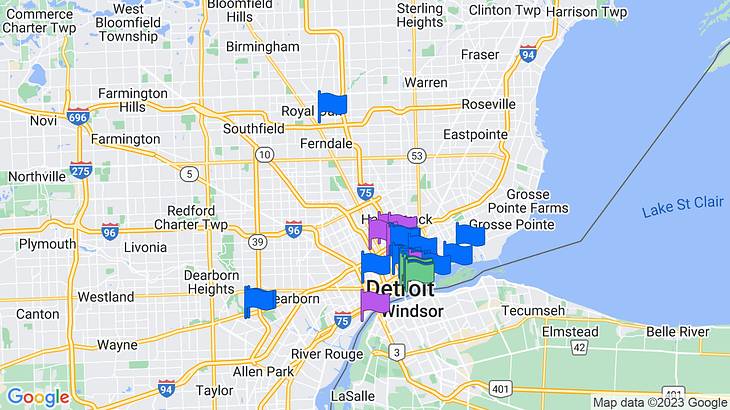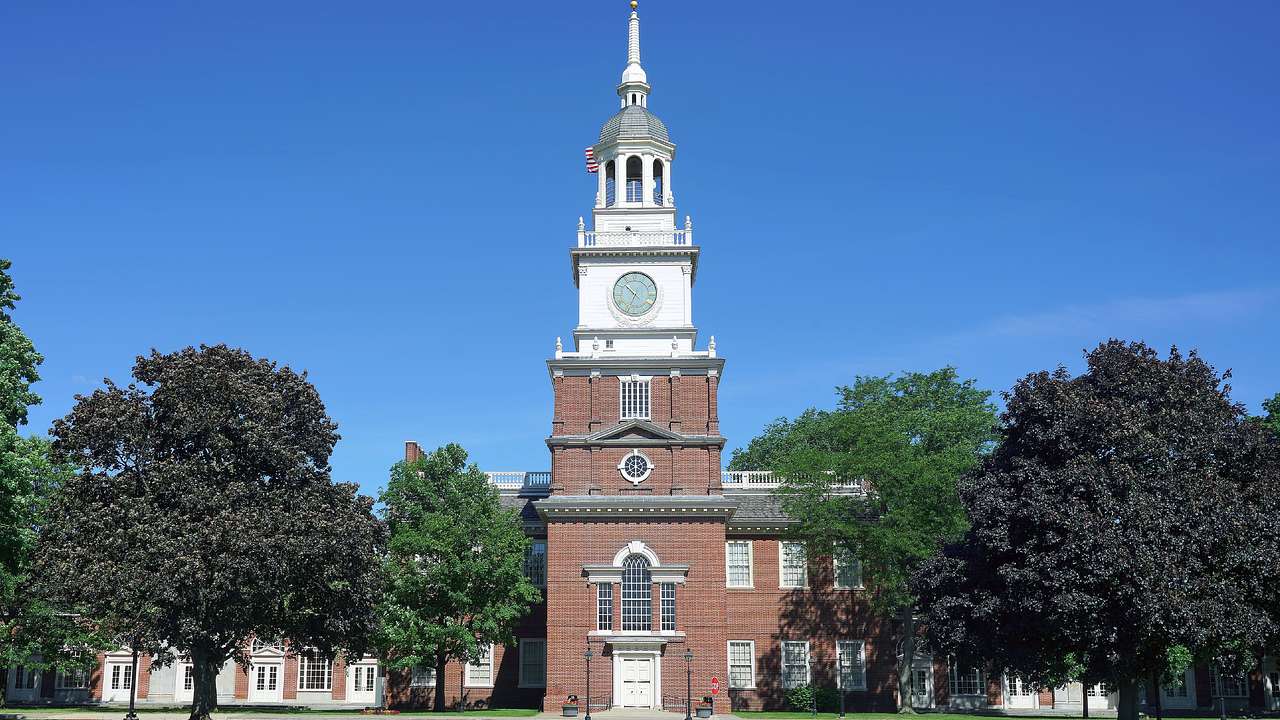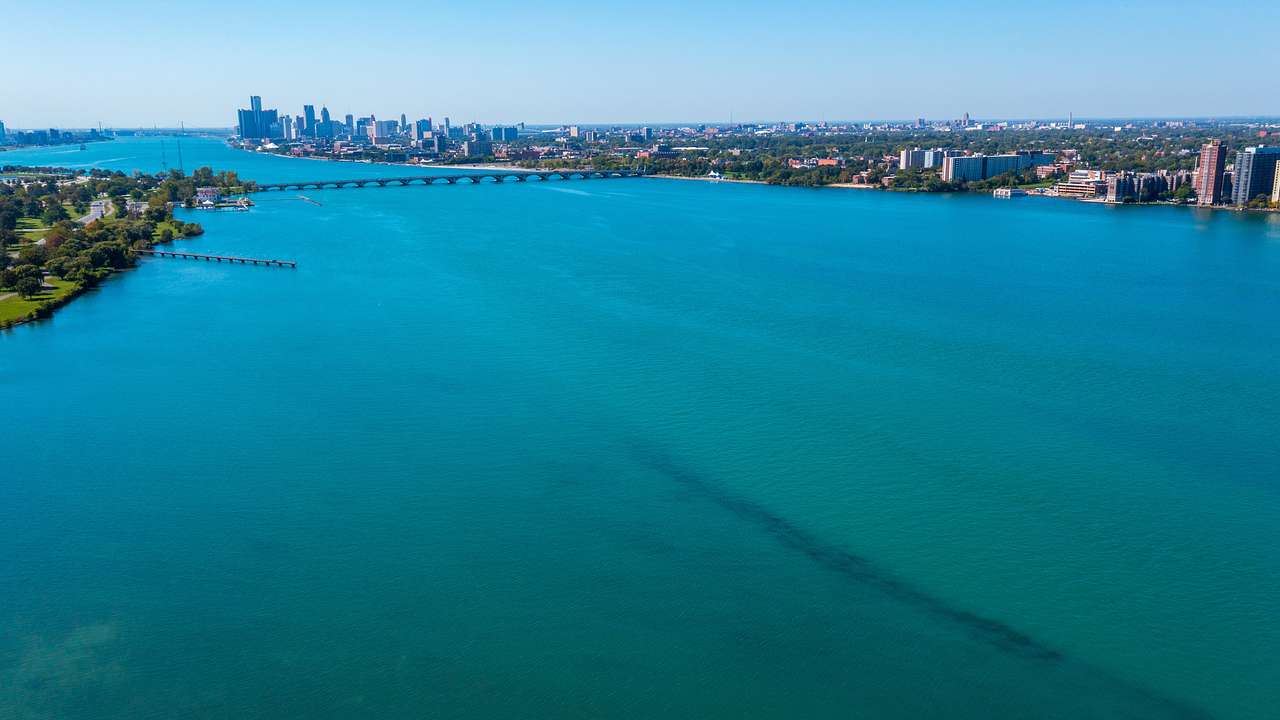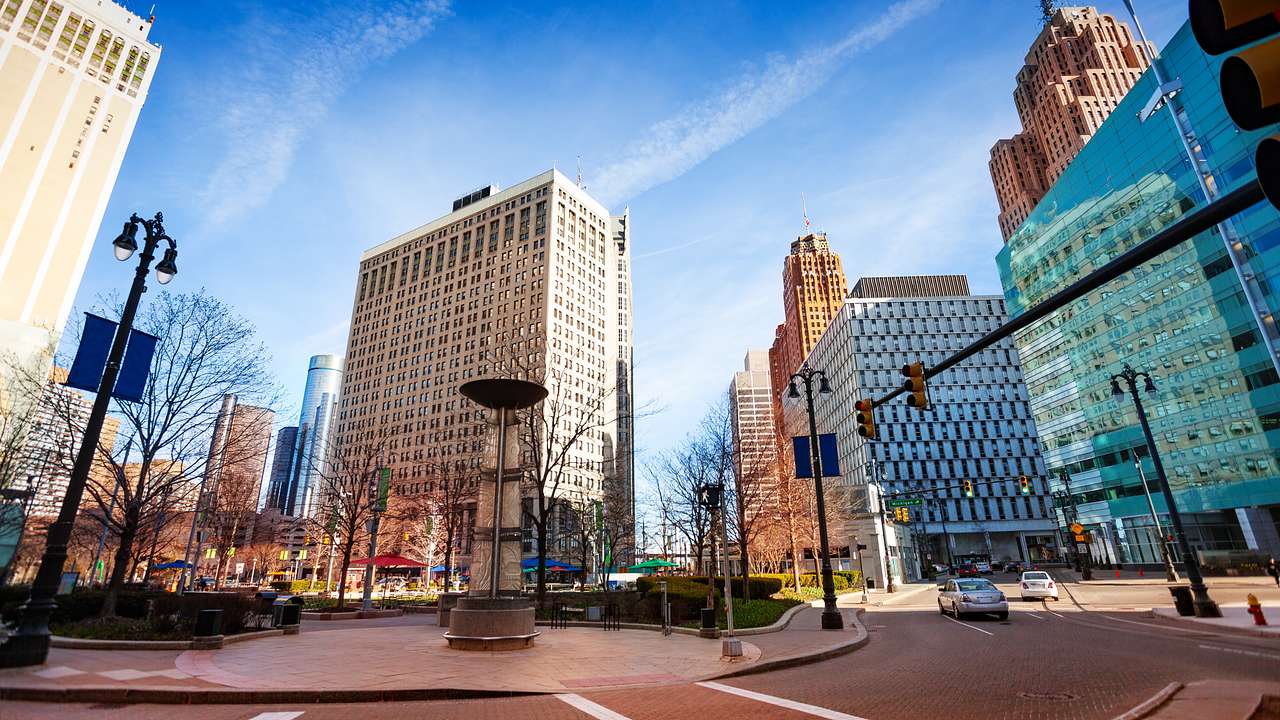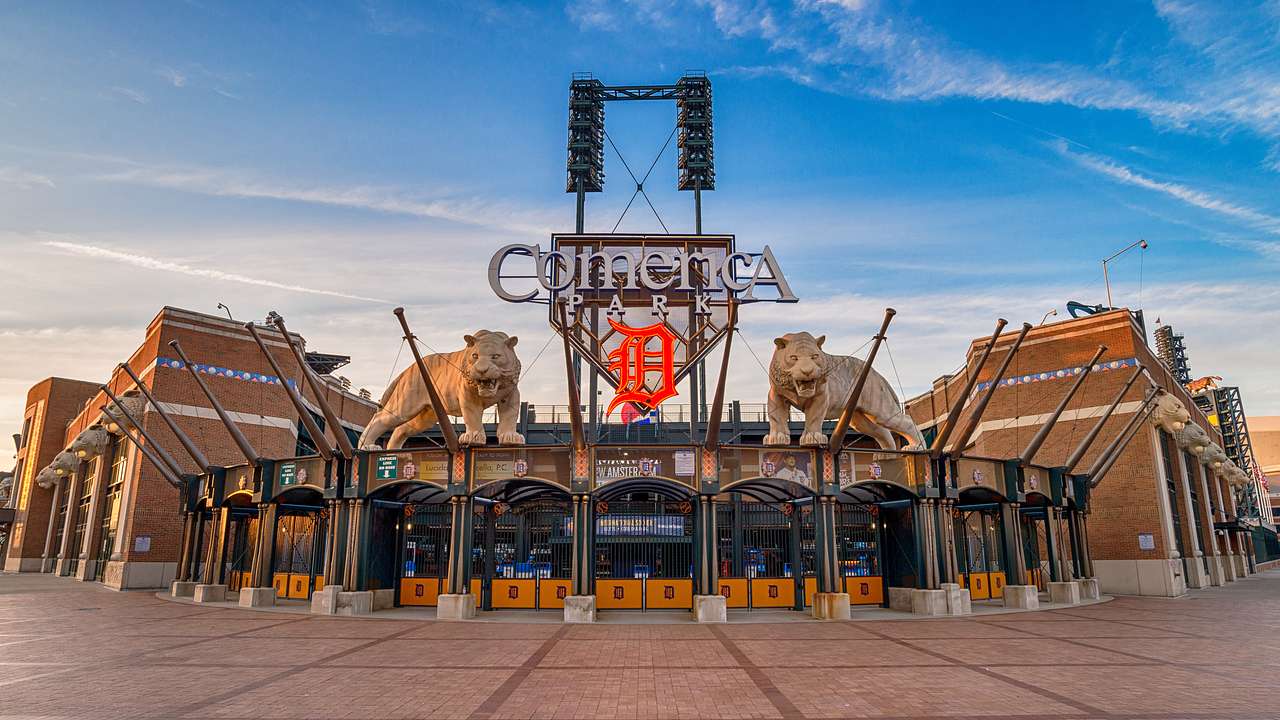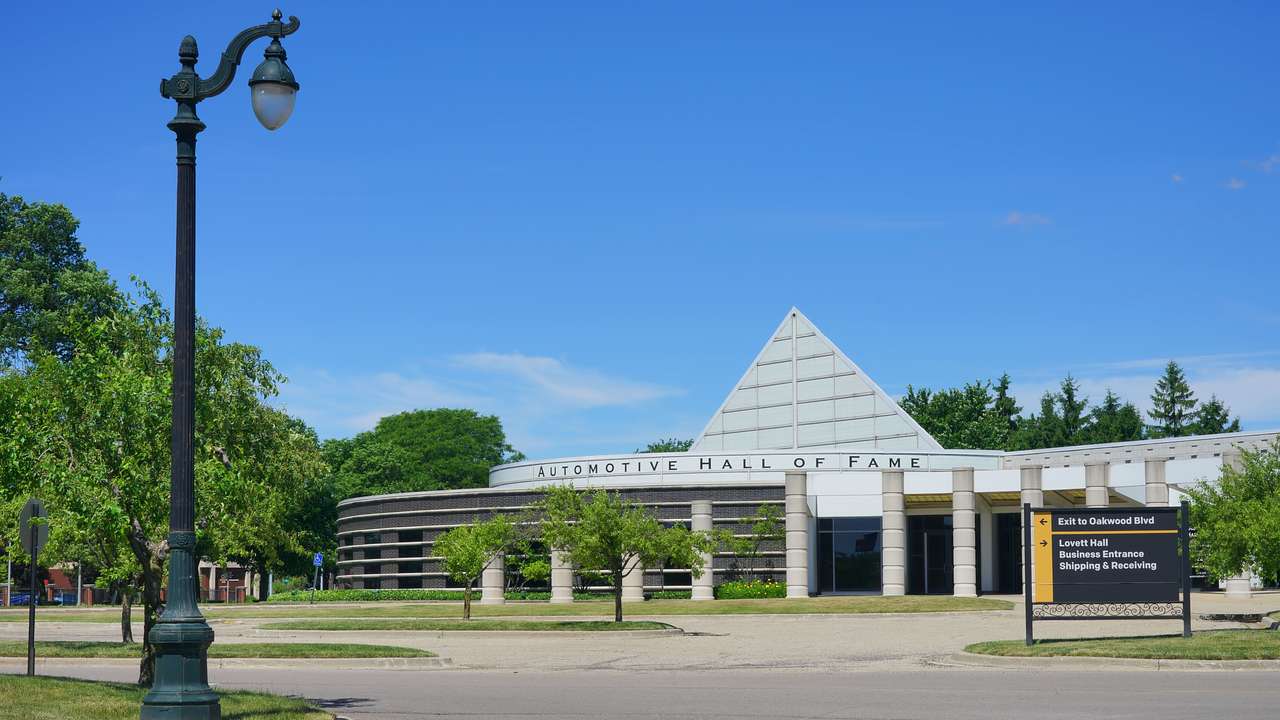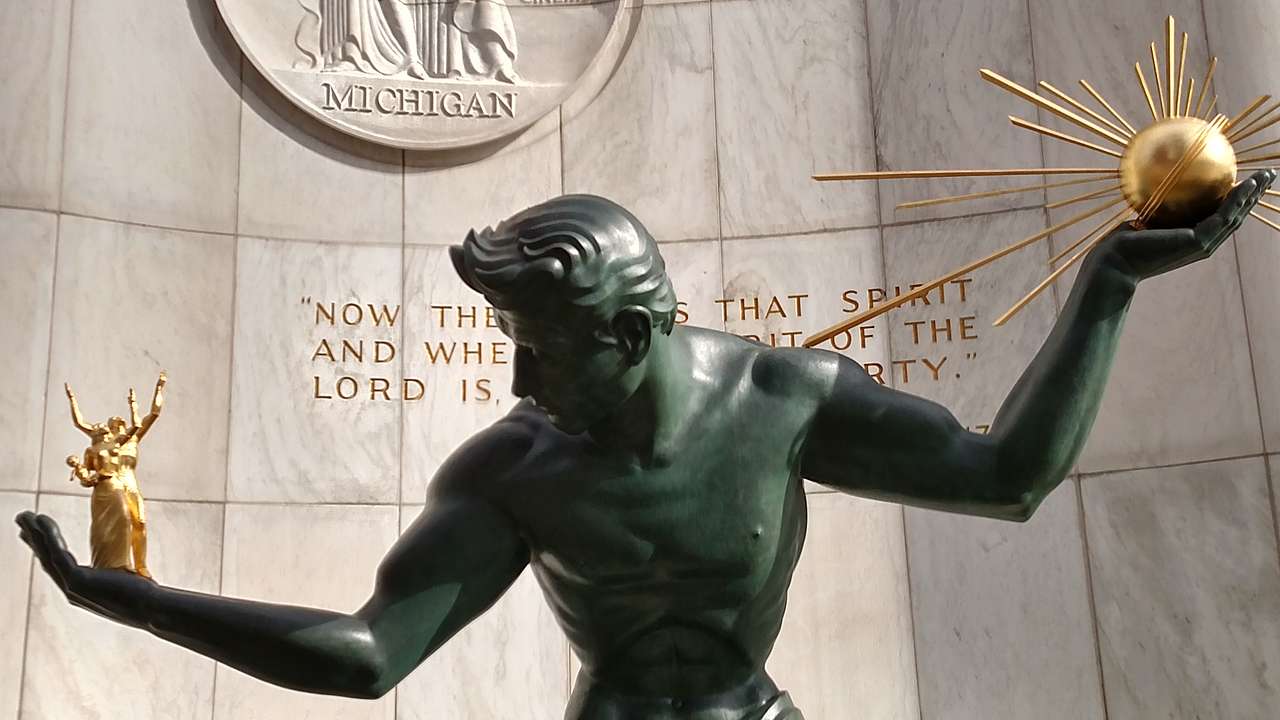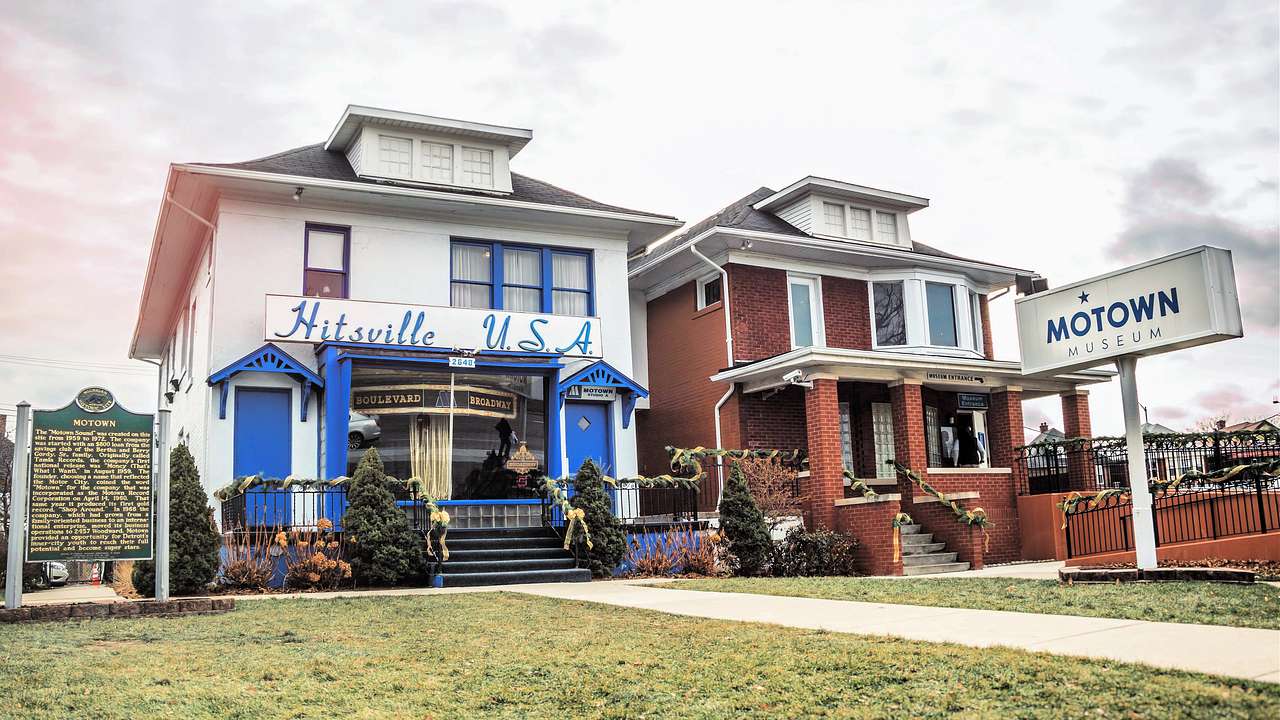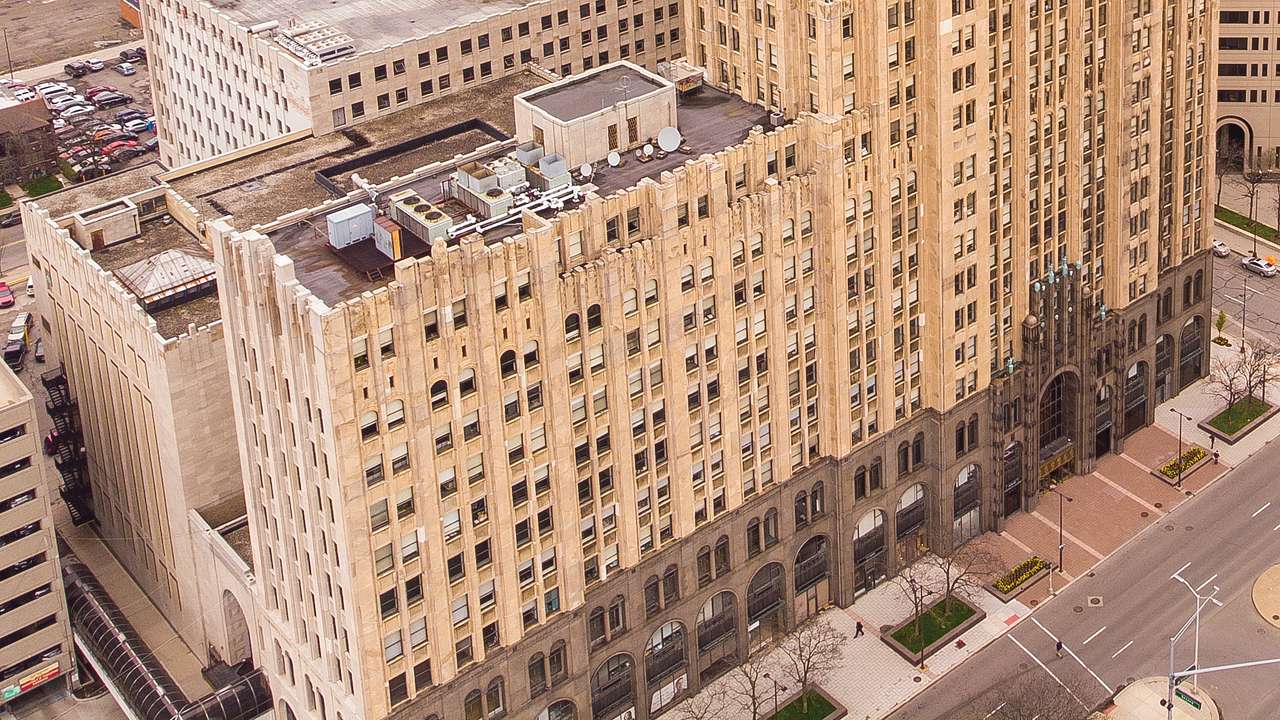30 Detroit Landmarks That Can't be Missed
Destguides may receive commissions from purchases made through affiliate links in this article.
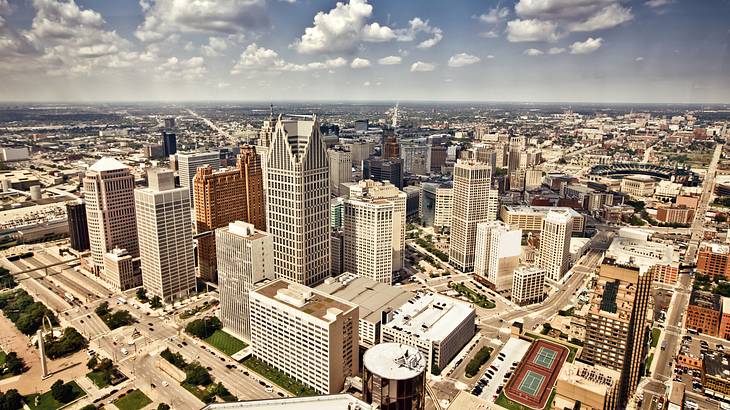
In the northern US state of Michigan, Detroit sits on the Detroit River, across from the Canadian city of Windsor. Detroit has a rich history; the town was first settled in 1701, although much of it burned down in an 1805 fire.
But in the more than two centuries since, the city of Detroit has rebuilt itself. It became the center of the American car industry and once again reinvented itself with modern industry and financial renewal after facing economic decline.
The city is now also growing in popularity as a city break destination. Visitors will discover an array of remarkable Detroit landmarks to see during a trip, including automotive, architectural, and historical sites.
If you're considering visiting Motor City or want to learn more about its many places of interest, keep reading for a comprehensive list of the top 30 landmarks in Detroit that can't be missed!
Planning a last-minute trip to Detroit?
When visiting Detroit, book your entrance tickets and tours before you go. Below are some top recommendations to get you started.
☂️ Top tours and experiences in Detroit
30 Landmarks in Detroit
-
Landmarks of Detroit
- Jefferson Avenue
- Eastern Market
- Henry Ford Museum of American Innovation
- Detroit Zoo
- Charles H. Wright Museum of African American History
- West Grand Boulevard
- Detroit River
- Detroit Institute of Arts Museum
- Campus Martius Park
- Belle Isle Bridge
- Fox Theatre
- Grand Circus Park
- Comerica Park
- Anna Scripps Whitcomb Conservatory
- Hart Plaza
- Michigan Science Center
- Automotive Hall of Fame
- Detroit Masonic Temple
- Monuments in Detroit
- Historical Landmarks in Detroit
Detroit Landmarks Video
Check out our highlights video of Detroit landmarks.
Detroit Landmarks Map
A map of Detroit landmarks. Use the map to explore all of the points of interest.
Landmarks of Detroit
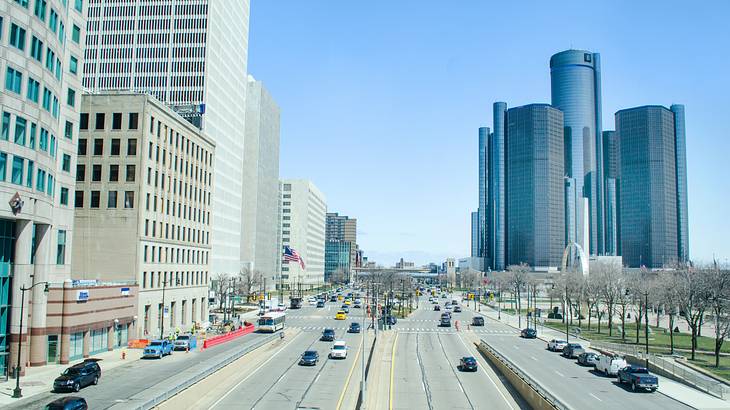
Jefferson Avenue
Jefferson Avenue runs throughout Detroit along the shore of the Detroit River and Lake St. Claire for nearly 64 miles. It was one of the original five main roads planned for Detroit by city architect Augustus Woodward in 1807. It was named after then-president (and friend of Woodward) Thomas Jefferson.
While many people enjoy the scenic drive north of the city along Lake St. Claire, some of the most popular attractions in Detroit, Michigan, are on Jefferson Avenue. Places to see when on Jefferson Avenue include Hart Plaza, the Spirit of Detroit, and the Renaissance Center.
Eastern Market
Eastern Market is another place in Detroit that you must visit. The renowned market is located to the northeast of Downtown Detroit.
Its origin spawns from a mid-1800s hay-and-wood market which was moved to its current location on Russell Street in 1891. The space saw massive growth following World War II, and today the six-block market is a much-loved attraction with locals and visitors.
If you want to explore the market, Eastern Market is open every Saturday, with over 225 vendors selling flowers, produce, and a range of other products. In addition, from June to September, Eastern Market hosts a small farmers market on Tuesdays and local artisans on Sundays.
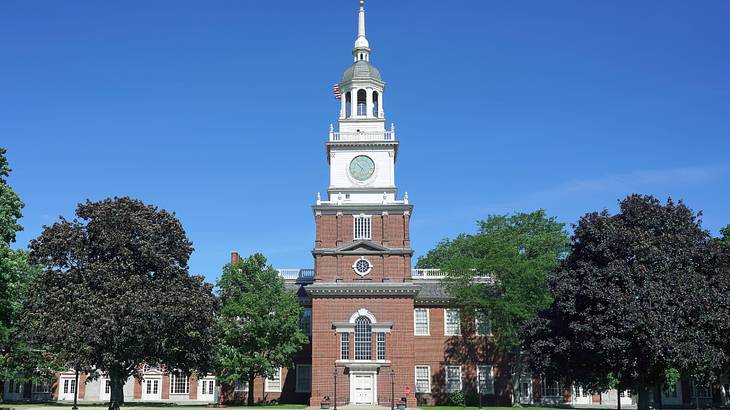
Henry Ford Museum of American Innovation
The Detroit nicknames of Motor City and the Automotive Capital of the World exist for a reason! The city has a long history in the automotive industry, with much of this linked to the Ford brand.
You can learn more about this industry at the Henry Ford Museum of American Innovation, which was founded by automotive magnate Henry Ford in 1929. The landmark is located in the Dearborn neighborhood just west of the Southfield Freeway.
At first, the museum housed Ford's personal collection of Americana and historically significant memorabilia, with new pieces added over the last 90 years.
Some of the most prominent pieces of the museum's collection include President John F. Kennedy's limousine, the Montgomery city bus that Rosa Parks was arrested on, and the chair from Ford's Theatre in Washington DC that President Abraham Lincoln was sitting in when he was assassinated.
Detroit Zoo
Covering 125 acres on Woodward Avenue along Interstate 696, the Detroit Zoo is among the best Detroit, Michigan, landmarks for families and groups with children. The Detroit Zoo is home to over 2,000 animals across nearly 250 species.
Some of the Detroit Zoo's most popular exhibits include their penguin enclosure, polar bear habitat, and the Holden Reptile Conservation Center. If you intend to see everything the Detroit Zoo offers, you may need to plan for more than one visit.
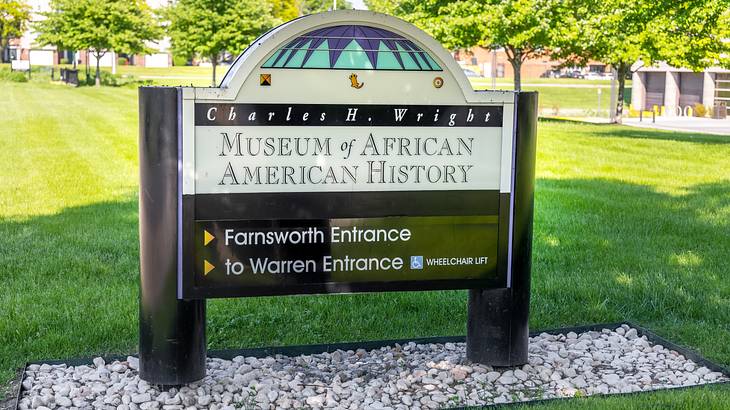
Charles H. Wright Museum of African American History
Located within Detroit's Midtown Cultural Center, the Charles H. Wright Museum of African American History boasts 125,000 square feet of exhibit space. With a catalog of over 35,000 items, it is one of the country's most prominent African American museums.
Originally opened as the International Afro-American Museum in a house on West Grand Boulevard in 1966, the landmark moved to a 28,000-square-foot space on Frederick Street in 1987 before relocating to its current home in 1997. The facility was renamed in honor of its founder, Dr. Charles H. Wright, in 1998.
West Grand Boulevard
West Grand Boulevard has a rich history as an African American community. By the 1940s, the majority of businesses in the area, simply called "The Boulevard," were black-owned. And it was here, in 1959, that Berry Gordy started Motown Records.
The International Afro-American Museum was founded on West Grand Boulevard in 1965 and has since moved to the more spacious Midtown Cultural Center. Today, the West Grand Boulevard Historic District comprises 32 buildings dating from the early 1900s.
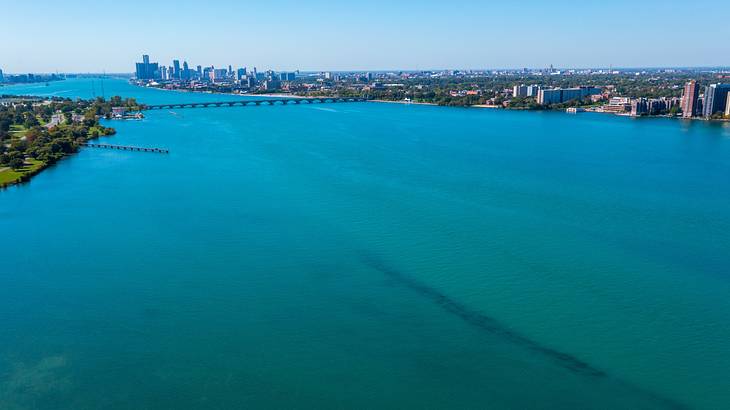
Detroit River
The Detroit River runs 28 miles between Lake St. Clair and Lake Erie. Detroit derived its name from the French moniker for the river, "Le Détroit du Lac Érié."
You'll find the Detroit Riverwalk along the banks of the Detroit River, famous for some of the best views of the Detroit skyline. A little closer to Lake St. Clair sits Belle Isle, a nearly 1,000-acre island nature park and recreational destination.
Detroit Institute of Arts Museum
Art enthusiasts flock to the Detroit Institute of Arts Museum, one of the most famous landmarks in Michigan, thanks to its massive catalog of more than 65,000 pieces. Prominent American artists on display include Audubon, O'Keeffe, and Warhol.
The Detroit Institute of Arts Museum was established in 1885, and its current 658,000-square-foot Beaux-Arts and Italian Renaissance building was completed in 1927. More than half a million people visit the landmark annually to view the fantastic collection, which includes suits of armor donated by publishing tycoon William Randolph Hearst!
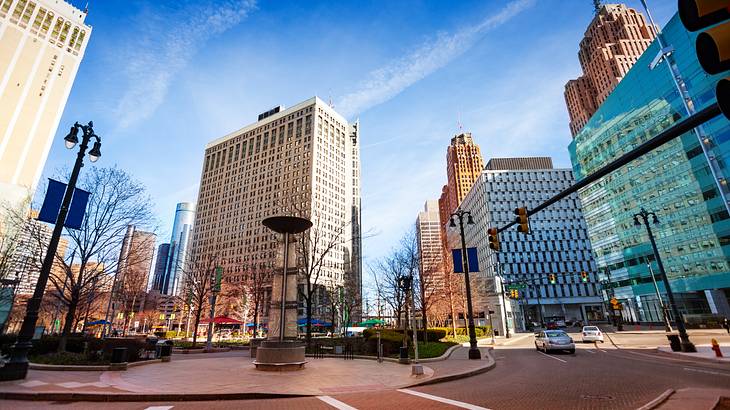
Campus Martius Park
Deriving its name from a square in Marietta, Ohio, Campus Martius Park is a two-and-a-half-acre open space in Downtown Detroit along Woodward Avenue. During the summer, Campus Martius Park hosts various concerts, performances, and food truck rallies. In the winter, you don't want to miss trying out the popular all-ages ice rink and viewing the municipal tree display.
Belle Isle Bridge
The Belle Isle Bridge, also called the Douglas MacArthur Bridge, connects mainland Detroit to the Belle Isle Nature Center built on the Detroit River. The Belle Isle Bridge opened in 1889, but a fire destroyed the original wooden span in 1915.
The current structure, named the George Washington Bridge at the time, was completed in 1923. During World War II, the bridge was renamed after General Douglas MacArthur, the supreme commander of Allied forces in the Southwest Pacific.
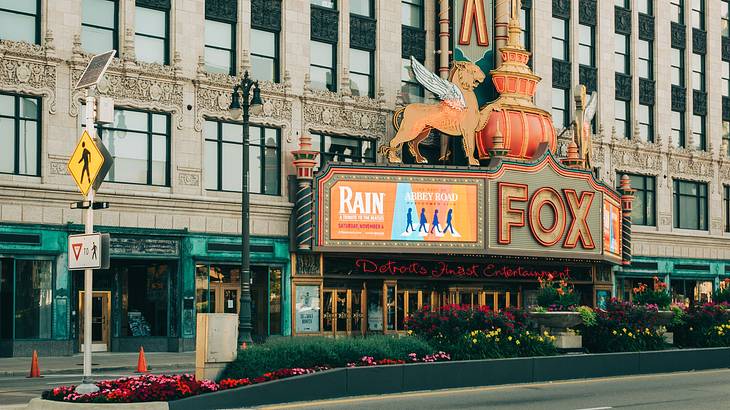
Fox Theatre
The ornate Fox Theatre is a Detroit cultural landmark that you can't miss visiting! The theater, just north of Grand Circus Park, opened in 1928. When construction had finished, it became Detroit's most celebrated theater, with the capacity to seat around 5,000.
Celebrities who have appeared at the Fox Theatre include Shirley Temple, Elvis Presley, and Frank Sinatra. The theatre is still open for concerts, productions, and behind-the-scenes tours.
Grand Circus Park
Grand Circus Park is a five-acre, semi-circle-shaped park in Downtown Detroit. The historic outdoor space, established in 1850, has been a prominent part of Detroit life for nearly two centuries.
You'll find some of the city's most scenic architecture around Grand Circus Park, with the Detroit Opera House to the east and The Fillmore and Fox Theatre along Woodward Avenue to the north.
If you plan to visit this landmark, pay attention to the local sports schedule; the park's proximity to Comerica Park and Ford Field can mean big crowds and traffic on game days.
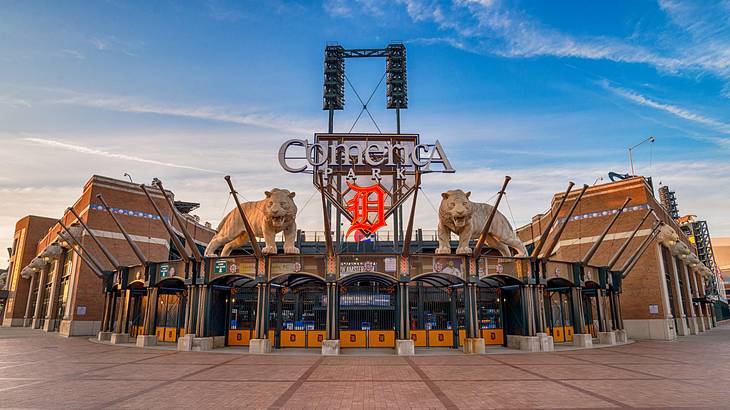
Comerica Park
Comerica Park, in Downtown Detroit, is a professional baseball stadium that's home to the Detroit Tigers. It replaced the Tiger's previous field, Tiger Stadium, which dated back to 1912. The new stadium's first game was played in April 2000.
Located across from Ford Field, home to the NFL's Detroit Lions, Comerica Park is more than just a baseball field; it features a tiger-themed carousel, a baseball-shaped Ferris wheel, and the Big Cat food court.
Anna Scripps Whitcomb Conservatory
The 13-acre Anna Scripps Whitcomb Conservatory is on Belle Isle in the middle of the Detroit River. Inspired by the famed gardens at Monticello, it was initially called "The Conservatory" when it opened in 1904.
In addition to outdoor exhibits, the Whitcomb Conservatory has a nearly one-acre-sized, climate-controlled horticulture building divided into five unique environments. The Anna Scripps Whitcomb Conservatory was named in 1955 after the Detroit newspaper heiress donated her extensive orchid collection to the city.

Hart Plaza
Back in 1701, Hart Plaza was the location of the area's original European settlement, Fort Pontchartrain. Nowadays, the scenic park along the Detroit River is better known for hosting some of the city's biggest concerts and music festivals at its amphitheater.
On top of its unbeatable vistas of the Detroit River and Windsor, Canada, on the opposite shoreline, you don't want to miss the sculptures and monuments lining Hart Plaza's pathways. And you'll be hard-pressed to find a better viewing area for the Ford Fireworks display every June.
Michigan Science Center
Founded in 1970, the Michigan Science Center is located in the Midtown Cultural Center near other Detroit, MI, landmarks like the Charles H. Wright Museum of African American History and the Detroit Institute of Arts Museum.
The Michigan Science Center boasts more than 220 interactive learning exhibits across various disciplines, including space, health, and nanotechnology. There's even a STEM Playground. Though designed with young learners in mind, the Michigan Science Center still has plenty for adults to do and discover.
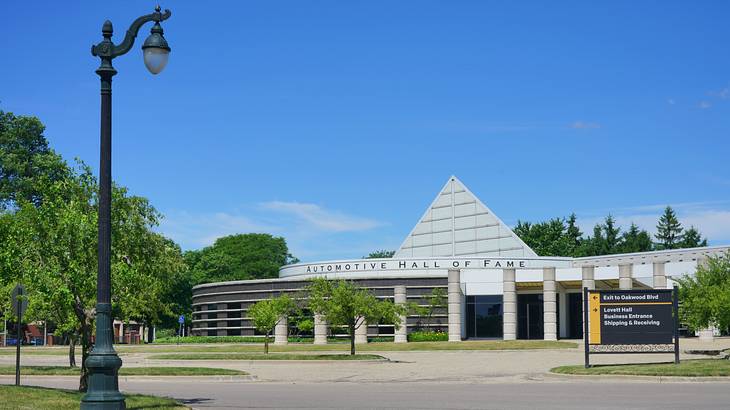
Automotive Hall of Fame
One of the more important facts about Michigan is that the automotive industry played a considerable role in Detroit's growth throughout the 20th century. Thanks to the industry's solid and local roots, the Automotive Hall of Fame moved its facility to the Detroit suburb of Dearborn in 1997.
Located just west of the Henry Ford Museum of American Innovation, the Automotive Hall of Fame pays tribute to those who helped develop the automotive industry over the years.
Detroit Masonic Temple
The Detroit Masonic Temple is a massive Neo-Gothic landmark in the Cass Corridor area of Midtown. Sitting on Temple Street across from Cass Park, the 14-floor limestone-faced structure is the largest Masonic Temple in the world.
In 2013, musician and Detroit local Jack White donated $142,000 to cover the building's back taxes owed to Wayne County. The Detroit Masonic Temple renamed their Scottish Rite Cathedral Theater the Jack White Theater to recognize the musician's generosity.
Monuments in Detroit

Spirit of Detroit
It's difficult to miss the 26-foot-tall Spirit of Detroit monument at the Coleman A. Young Municipal Center. It's so massive that when the nine-ton bronze statue was crafted in the 1950s, it was the largest cast bronze statue created since the Renaissance. Detroit-area sculptor Marshall Fredericks designed this unmissable landmark.
Alexander Macomb Monument
Erected in the middle of Washington Boulevard, the Alexander Macomb Monument is an unmissable bronze statue. It pays tribute to a prominent Detroiter and American military hero, Alexander Macomb, born in Detroit in 1782.
Joining the military at 16, his actions at the Battle of Plattsburgh during the War of 1812 earned him the Congressional Gold Medal. Macomb was then promoted to Commanding General of the United States Army, the highest rank at the time, in 1828.
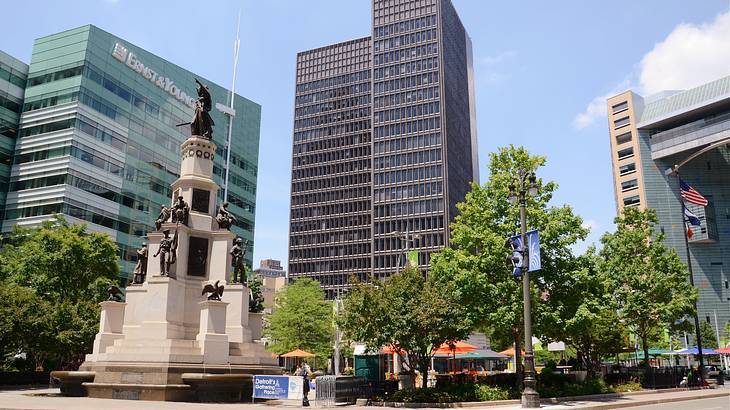
Michigan Soldiers' and Sailors' Monument
The Michigan Soldiers' and Sailors' Monument sits on the southern end of Campus Martius Park in Downtown Detroit. Officially unveiled in 1872, the monument is one of the oldest tributes to Civil War soldiers in the United States.
Sculpted by Michiganian Randolph Rogers, the Michigan Soldiers' and Sailors' Monument comprises a granite base and several bronze statues and plaques. The piece is topped by a nearly two-ton statue of a Native American queen armed with a shield and sword.
Monument to Joe Louis "The Fist"
Titled "The Fist," the Monument to Joe Louis is a 24-foot-long bronze and painted steel sculpture paying tribute to Louis, a world champion boxer and symbol of the fight against racism. The monument resides at the end of Woodward Avenue, across from Hart Plaza in the middle of Jefferson Avenue.
Joe Louis was an accomplished boxer raised in Detroit during the first half of the 20th century. World heavyweight champion from 1937 to 1949, Louis is considered to be the first African-American to reach widespread celebrity status throughout the United States.
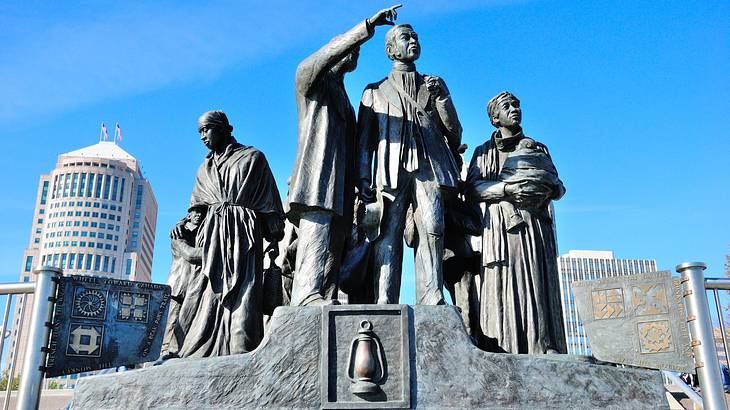
International Memorial to the Underground Railroad
Located along the Detroit Riverwalk in front of Hart Plaza, the International Memorial to the Underground Railroad is one of the landmarks in Detroit that you shouldn't miss.
Titled "Gateway to Freedom," the monument depicts eight enslaved people and an Underground Railroad conductor looking across the Detroit River to Canada. It illustrates Detroit's importance as the last stop for many escaped enslaved people before finally reaching freedom.
Russell A. Alger Memorial Fountain
Crafted by architect Henry Bacon and sculptor Daniel Chester French, the Russell A. Alger Memorial Fountain is a granite and bronze monument depicting a welcoming female warrior. You can find the fountain in Grand Circus Park.
A group of Civil War veterans commissioned the fountain to honor its namesake, Russell A. Alger, a Union soldier who went on to become governor of Michigan from 1885 to 1887. He was then a senator from 1902 until his death in 1907.
Historical Landmarks in Detroit

Motown Museum
Motown Records, credited with producing some of the most popular music of the 1960s and 1970s, started in a small house on West Grand Boulevard in 1959. The building the museum is housed in is where Berry Gordy lived before Motown became successful.
Today, visitors to the Motown Museum can see where some of the era's greatest hits were recorded in the historic Studio A. You can also view memorabilia and artifacts relating to the genre.
Old St. Mary's Catholic Church
In Downtown Detroit's historic Greektown neighborhood, you'll see the Old St. Mary's Catholic Church, an impressive two-tower parish with a Romanesque-style brick exterior. The church was founded in 1834, making it the third-oldest parish in Detroit. The present Old St. Mary's Catholic Church building was completed in 1885.
Visitors will notice that the interior walls are especially stunning as they are decorated with stained glass. You can also see ten solid granite pillars running along the main aisles.
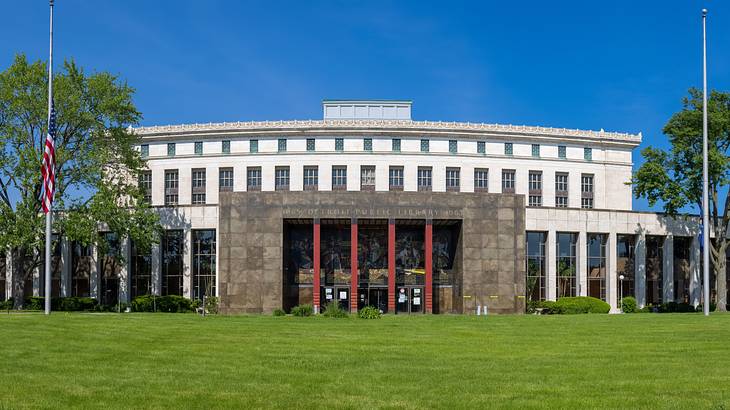
Detroit Public Library
The Detroit Public Library has over 20 branches around the city, but the historic Main Library at 5201 Woodward Avenue is the most impressive. Designed in an Italian Renaissance style, it opened in 1921, with the north and south wings added in 1963.
When you visit, don't miss out on seeing the statues and sculptures around the library's exterior. You'll also want to admire the impressive tile mosaic sitting above the building's entrance on Cass Avenue.
Historic Fort Wayne
Historic Fort Wayne on Fort Street was completed in 1851 and sits on nearly 100 acres along the Detroit River. The fort was built to defend against a possible attack from Canada by British forces.
It was also an important regional base during the Civil War and was used to house POWs during World War II. Some sections then remained in military use throughout the Korean and Vietnam Wars. Today, you can visit the fort to take a tour and learn more about its history.
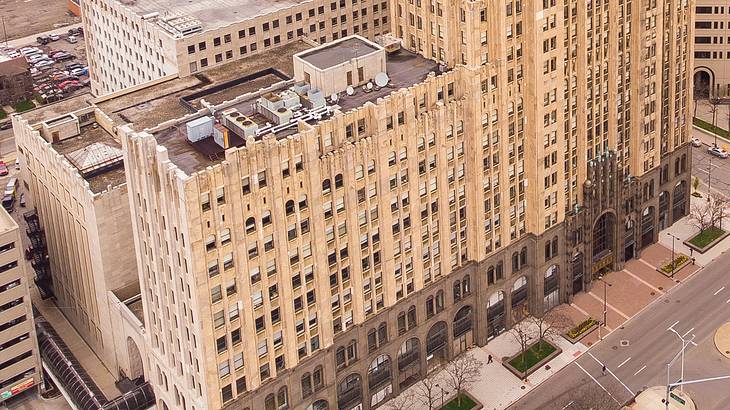
Fisher Building
The 30-story Fisher Building is one of the city's most prominent examples of Art Deco architecture. The 441-foot structure in the city's New Center district completed construction in 1928.
Visitors can enjoy a free tour of the Fisher Building and admire design elements like marble hallways, brass accents, tile mosaics, and painted ceilings. In addition, don't leave without visiting the unique local retailers and food vendors that call the landmark's first-floor home.
Ford Piquette Avenue Plant Museum
The Ford Piquette Avenue Plant Museum was the second production center Henry Ford opened in 1904 for the Ford Motor Company. But the plant's actual claim to fame is as the birthplace of the Model T car; production of the first 12,000 vehicles began in 1908.
After serving a number of uses throughout the 20th century, the site was reopened as the Ford Piquette Avenue Plant Museum in 2001. You can now tour the plant's collection of antique vehicles and even peek into the office Henry Ford used to work from.
In Summary
With a history dating back more than 300 years, Detroit is home to numerous historical and modern landmarks.
The city came into its own during the early 1900s, with Detroit playing a significant role in developing the American automotive industry. Detroit's landmarks, like the Ford Piquette Avenue Plant Museum and Automotive Hall of Fame, are must-sees for car buffs, especially those who appreciate auto history.
But Detroit is more than just the birthplace of cars; the city is also home to impressive monuments like the Spirit of Detroit and the International Memorial to the Underground Railroad. No matter where your interests lie, Detroit has landmarks that you'll appreciate and find interesting!
Want to keep exploring?
Subscribe for discounts on tickets and hotels and our latest guides.
Thank you for subscribing
We will be in touch soon with discounts on tickets and hotels and our latest guides.
Want to keep exploring?
Subscribe for discounts on tickets and hotels and our latest guides.
Thank you for subscribing
We will be in touch soon with discounts on tickets and hotels and our latest guides.


